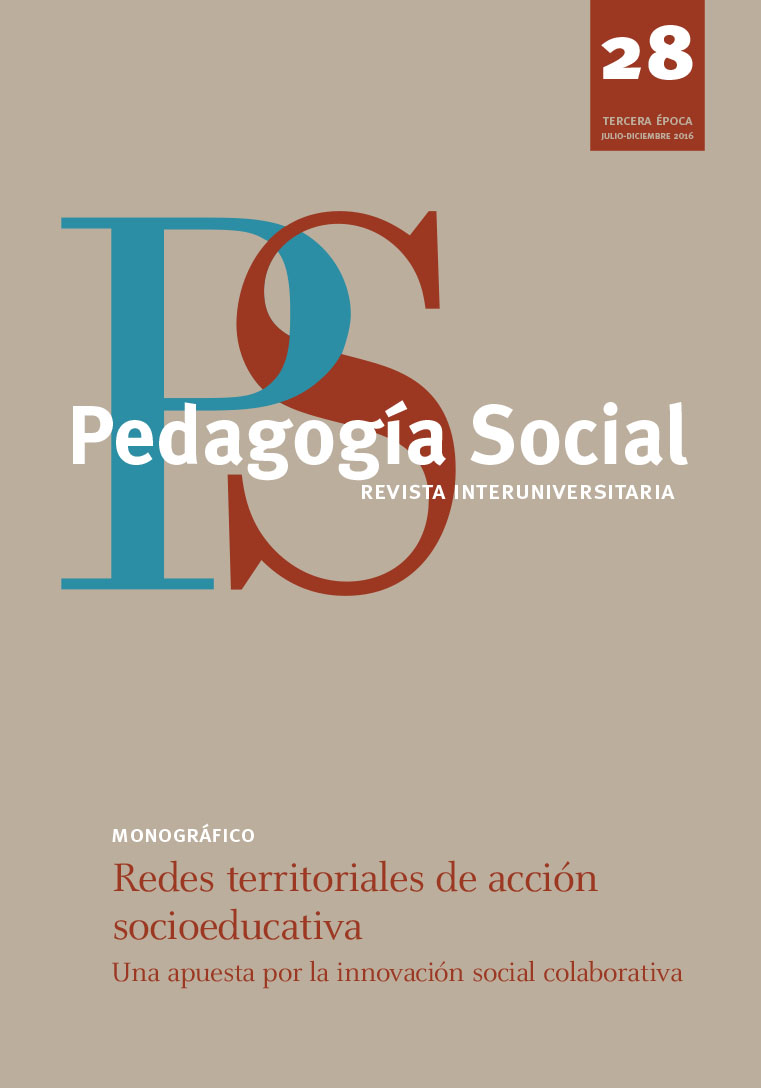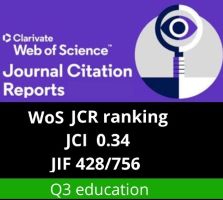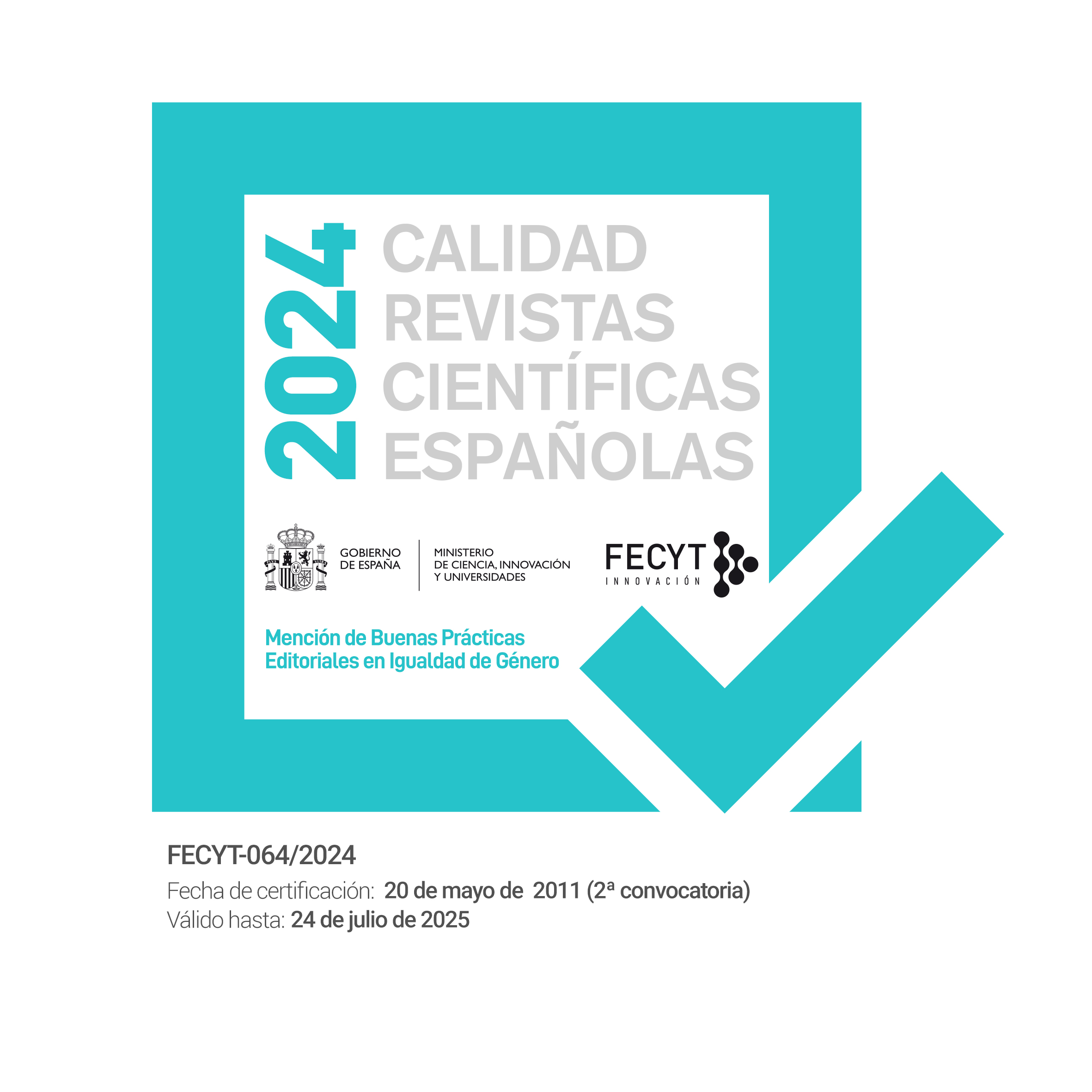Diffusion of innovation: a social network and organizational learning approach to governance of a districtwide leadership team
DOI:
https://doi.org/10.7179/PSRI_2016.28.04Keywords:
social networks, innovative climate, organizational learning, governance, leadershipAbstract
District and school leaders play particularly important roles in leading districtwide improvement, as they are increasingly held accountable for bringing about change and improvement for educational innovation and excellence. While conventional districtwide governance places much of its focus on technical and administrative matters such as policy development, supervision, and monitoring progress. This technical focus often overlooks the fundamental aspect that drives the progress of improvement—the social infrastructure shaped by interpersonal relationship. Responding to recent scholarships that calls for a networked approach to governance, this study examined the change effort of a districtwide leadership team over three points in time drawing on social network theory and analysis focused on district governance. Specifically, we focused on the type of interpersonal relationship in which leaders engaged with each other in sharing and exchanging innovative ideas as these efforts may support better governance. Additionally, we explored organizational learning as a way to examine climate in support of districtwide innovative efforts during change process. Our findings from leaders indicated increased innovative behaviors and perceived climate on organizational learning over time. The findings suggested that leaders increased connections around risk taking, regardless of their work level over time. This increased connectedness around innovation was coupled with an increase in leaders’ perception of the district’s learning climate, suggesting a cohesive approach to governance and improvement.
Downloads
References
Alsbury, T. L. (2003). Superintendent and school board member turnover: Political versus apolitical turnover as a critical variable in the application of the dissatisfaction theory. Educational Administration Quarterly, 39(5), 667-698.
Anthes, K. (2002). School and District Leadership. No Child Left Behind Policy Brief. D.C.: Education Commission of the States.
Argyris, C., & Schon, D. A. (1976). Theory in practice: increasing professional effectiveness. Adult Education, 27, 63-66.
Baker, W. (2014). Making pipes, using pipes: how tie initiation, reciprocity, positive emotions, and reputation create new organizational social capital. In D. J. Brass, G. Labianca, A. Mehra, D. S. Halgin, & S. P. Borgatti (Eds), Research in the sociology of organizations (pp. 57-71). Bingley, UK: Emerald Group Publishing Limited.
Boeck, D. (2009). Washington School board standards, benchmarks of success and indicators for evaluation, with references: A framework for effective governance. Washington State School Directors’ Association.
Borgatti, S. P. (2002). Netdraw network visualization. Harvard, MA: Analytic Technologies.
Borgatti, S.P., Everett, M.G., & Freeman, L.C. (2002). Ucinet 6 for Windows: Software for Social Network Analysis. Harvard, MA: Analytic Technologies
Brass, D. J., Galaskiewicz, J., Greve, H. R., & Wenpin, T. (2004). Taking stock of networks and organizations: A multilevel perspective. Academy of Management Journal, 47(6), 795-817.
Burt, R. S. (1992). Structural holes. Cambridge, MA: Harvard University Press.
Carpenter, D. P., Esterling, K. M., & Lazer, D. J. (2004). Friends, brokers, and transitivity: Who informs whom in Washington politics?. Journal of Politics, 66(1), 224-246.
Carver, J. (2000). Remaking governance. American School Board Journal, 187(3), 26-30.
Coleman, J. S. (1990). Foundations of social theory. Cambridge, MA: Belknap Press of Harvard University Press.
Cox, E. P. & Malone, B. G. (2001, October). Board/superintendent relations: A board perspective on superintendent searches. Paper presented at the meeting of the Mid-Western Educational Research Association, Chicago, iL.
Cross, R., Borgatti, S. P., & Parker, A. (2002). Making invisible work visible: Using social network analysis to support strategic collaboration. California Management Review, 44(2), 25-46.
Cross, R., Ehrlich, K., Dawson, R., & Helferich, J. (2008). Managing collaboration: improving team effectiveness through a network perspective. California Management Review, 50(4), 74-98.
Daly, A. J., & Finnigan, K. (2011). The ebb and flow of social network ties between district leaders under high stakes accountability. American Educational Research Journal, 48, 39-79.
Daly, A. J., & Finnigan, K. (2012). Exploring the space between: Social networks, trust, and urban school district leaders. Journal of School Leadership, 22(3), 493-530.
Daly, A. J., Finnigan, K., & Liou, Y.-H. (2014, April). Challenges, changes, and churn: A longitudinal social network perspective of urban district leadership. Paper presented at the annual meeting of American Educational Research Association. Philadelphia, PA.
Daly, A. J., Liou, Y.-H., & Brown, C. (accepted). Social red bull: Exploring energy relationships in a school district leadership team. Harvard Educational Review.
Daly, A. J., Liou, Y.-H., & Moolenaar, N. M. (2013). The principal connection: Trust and innovative climate in a network of reform. in D. Van Maele, P. Forsyth, and M. Vanhoutte (Eds.), Trust relationships and school life (pp. 285-312). Dordrecht, The Netherlands: Springer.
Daly, A. J., Liou, Y., Tran, N. A., Cornelissen, F., & Park, V. (2014). The rise of neurotics: Social networks, leadership, and efficacy in district reform. Educational Administration Quarterly, 50(2), 233-278.
Daly, A. J., Moolenaar, N. M., & Liou, Y.-H., Tuytens, M., & Del Fresno, M. (2015). Why so difficult? Exploring negative relationships between educational leaders: The role of trust, climate, and efficacy. American Journal of Education, 122(1), 1-38.
De Amorim S.G., Barthélemy, J.P., & Ribeiro C.C. (1990). Clustering and clique partitioning: Simulated annealing and tabu search approaches. Research report from Groupe d’études et de recherche en analyse des décisions. Ecole des Hautes Etudes Commerciales, Ecole Polytechnique, Université McGill.
Delagardelle, M. L. (2008). The lighthouse inquiry: Examining the role of school board leadership in the improvement of student achievement. in T. L. Alsbury (Ed.), The future of school board governance: Relevancy and revelation (pp. 191-223). Lanham, MD: Rowan & Littlefield Education.
Finnigan, K. S., Daly, A. J., & Che, J. (2013). Systemwide reform in districts under pressure: The role of social networks in defining, acquiring, using, and diffusing research evidence. Journal of Educational Administration, 51(4), 476-497.
Frank, K., zhao, Y., & Borman, K. (2004). Social capital and the diffusion of innovations within organizations: The case of computer technology in schools. Sociology of Education, 77(2), 148-171.
Galway, G., Sheppard, B., Wiens, J., & Brown, J. (2013). The impact of centralization on local school district governance in Canada. Canadian Journal of Educational Administration And Policy, (145).
Garvin, D. A., Edmondson, A. C., & Gino, F. (2008). is yours a learning organization?. Harvard Business Review, 86(3), 109-116.
Golarz, R. J. & Golarz, M. J. (1995). The power of participation: Improving schools in a democratic society. Champaign, iL: Research Press.
Howlett, M. (2014). From the ‘old’ to the ‘new’ policy design: Design thinking beyond markets and collaborative governance. Policy Sciences, 47(3), 187-207
Johnson, P. A. (2012). School board governance: The times they are a-changin’. Journal Of Cases In Educational Leadership, 15(2), 83-102.
Johnson, P. E., & Chrispeels, J. H. (2010). Linking the central office and its schools for reform. Educational Administration Quarterly, 46(5), 738-775.
Kilduff, M., & Tsai, W. (2003). Social networks and organizations. London: Sage.
Krackhardt, D., & Stern, R. (1988). informal networks and organizational crises: An experimental simulation. Social Psychology Quarterly, 51, 123-140.
Lin, N. (2009). Social capital: A theory of social structure and action (8th ed.). New York: Cambridge University Press. Liou, Y.-H. (2015). School crisis management: A model of dynamic responsiveness to crisis life cycle. Educational Administration Quarterly, 51(2), 247-289.
Liou, Y.-H., & Daly, A. J. (2014). Closer to learning: Social networks, trust, and professional communities. Journal of School Leadership, 24(4), 753-795.
Liou, Y.-H., Daly, A. J., Brown, C., & Del Fresno, M. (2015). Foregrounding the role of relationships in reform: A social net-
work perspective on leadership and change. International Journal of Educational Management, 29(7), 819-837.
Liou, Y.-H., Grigg, J., & Halverson, R. (2014). Leadership and the design of data-driven professional networks in schools.
International Journal of Educational Leadership and Management, 2(1), 29-71.
Looney, J. W. (2009). Assessment and innovation in Education. OECD Education Working Papers, 24. OECD Publishing. Luckin, D., & Sharp, L. (2004). Remaking local governance through community participation? The case of the UK community waste sector. Urban Studies, 41(8), 1485-1505.
March, J. G. (1991). Exploration and exploitation in organizational learning. Organization Science, 2(1), 71-87.
McLean, L. D. (2005). Organizational culture’s influence on creativity and innovation: A review of the literature and implications for human resource development. Advances in Developing Human Resources, 7(2), 226-246.
Moolenaar, N. M., & Sleegers, P. J. C. (2010). Social networks, trust, and innovation. How social relationships support trust and innovative climates in Dutch Schools. In A. Daly (Ed.), Social network theory and educational change (pp. 97-114). Cambridge, MA: Harvard University Press.
Neves, P., & Eisenberger, R. (2012). Management communication and employee performance: The contribution of perceived organizational support. Human Performance, 25(5), 452-464.
Organisation for Economic Cooperation and Development (2013). Leadership for 21st century learning: Educational research and innovation. rue André-Pascal, Paris: OECD Publishing.
Polikoff, M. S., Marsh, J. A., Plank, D. N., Hall, M., Hardaway, T., Le, T. (2014).Californians and public education: Results from the fourth PACE/USC Rossier Poll. Sanford, CA: Policy Analysis for California Education [PACE].
Quinn, R., & Dawson, L. J. (2011). Good governance is a choice: A Way to re-create your board—the right way. Lanham, MD: Rowman & Littlefield Education.
Sasovova, z., Mehra, A., Borgatti, S. R., & Schippers, M. C. (2010). Network churn: The effects of self-monitoring personality on brokerage dynamics. Administrative Science Quarterly, 55(4), 639-670.
Scott, J. (2000). Social network analysis (2nd Ed.). London: Sage Publications.
Sliwka, A. (2003). Networking for educational innovation: A comparative analysis. in istance, D., Kobayashi, M. (Eds.), Networks of innovation: Towards new models for managing schools and systems (pp. 49-63). rue André-Pascal, Paris: OECD Publishing.
Smylie, M.A., & Hart, A.W. (1999). School leadership for teacher learning and change: A human and social capital development perspective. in J. Murphy & K. Louis (Eds), Handbook of educational administration (pp. 421-441). New York, NY: Longman.
Spillane, J. P., Kim, C., & Frank, K. A. (2012). instructional advice and information providing and receiving behavior in elementary schools: Exploring tie formation as a building block in social capital development. American Educational Research Journal, 49(6), 1112-1145.
Stojkovi , z., & Stefanovi , V. (2011). innovative enterprise: Condition of survival on the market. Megatrend Review, 8(1),315-325.
Uzzi, B., & Dunlap, S. (2012). Make your enemies your allies. CFA Digest, 42(3), 122-123.
Van Der Vegt, G. S., Van De Vliert, E., & Huang, X. (2005). Location-level links between diversity and innovative climate depend on national power distance. Academy Of Management Journal, 48(6), 1171-1182.
Vidovich, L., & Currie, J. (2012). Governance networks: interlocking directorships of corporate and nonprofit boards. Nonprofit Management & Leadership, 22(4), 507-523.
Wasserman, S., & Faust, K. (1994). Social network analysis: methods and applications. Cambridge, NY: Cambridge University Press.
Wehling, B. (2007). Building a 21st century U.S. education system. Washington, DC: National Commission on Teaching and America’s Future [NCTAF].
Weinbaum, E. H., Weiss, M. J., Beaver, J. K. (2012). Learning from NCLB: School responses to accountability pressure and student subgroup performance. Policy Brief. RB-54. Consortium For Policy Research in Education.
Yin, R. (2013). Case study research: Design and methods (applied social research methods) (5th Ed.). CA: Sage Publications.
Downloads
Additional Files
Published
How to Cite
Issue
Section
License
Copyright (c) 2016 Pedagogía Social. Revista Interuniversitaria

This work is licensed under a Creative Commons Attribution-NonCommercial-ShareAlike 4.0 International License.
Copyright and right to archive
The published version of the articles can be self-archived by their authors in open access institutional and thematic repositories. However, Pedagogía Social. Revista Interuniversitaria must authorize partial or global reutilisation on new papers or publications.
Published papers must be cited including the title of the journal Pedagogía Social. Revista Interuniversitaria, issue, pages and year of publication
Ethical responsibilities
Pedagogía Social. Revista Interuniversitaria does not accept any material that has been previously published in other documents or publications. Authors are responsible for obtaining the required permissions for partial or global reproduction any material from other publications, and to correctly quote its origin.
Pedagogía Social. Revista Interuniversitaria is obliged to detect and report fraudulent practices.
Only those who have intellectually contribute to the development of the paper must appear as authors.
The journal expects authors to declare any commercial partnership that might entail a conflict of interest with respect to the submitted article.
Authors must mention in the article, preferably in the “methodology” section, that the procedures used during the samplings and controls have been made after getting informed consent.
The journal will not use any received contribution in a way other than the goals described in these guidelines.
Copyright Notice
© Pedagogía Social. Revista Interuniversitaria. Papers published in both the printed and online versions of this Journal are property of Pedagogia Social. Revista Interuniversitaria, being required to cite the source in any partial or total reproduction.
Unless otherwise stated, all content of this electronic journal is distributed under "Creative Commons Attribution-Non commercial 3.0 Spain" (CC-by-nc) license for use and distribution. The informative version and the legal text of this license is available here. This has to be expressly stated in this way when necessary.






